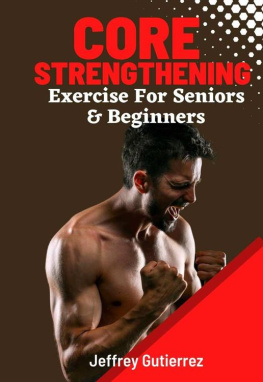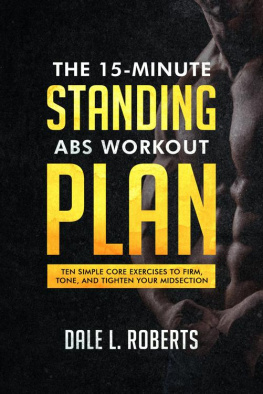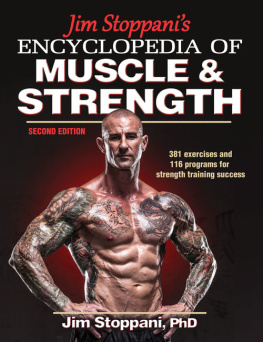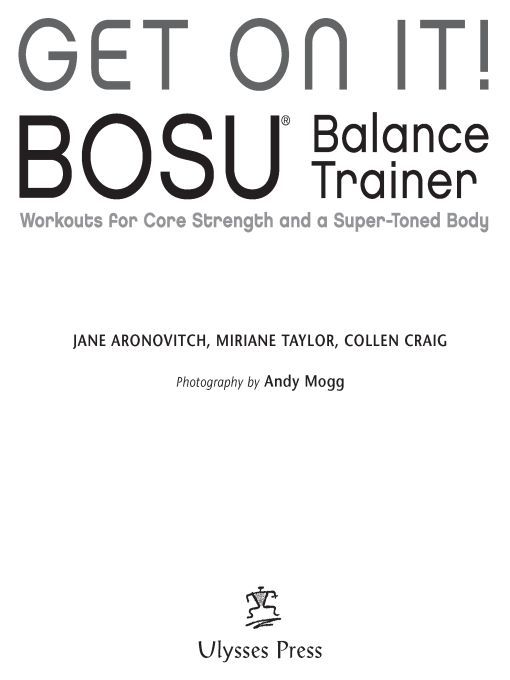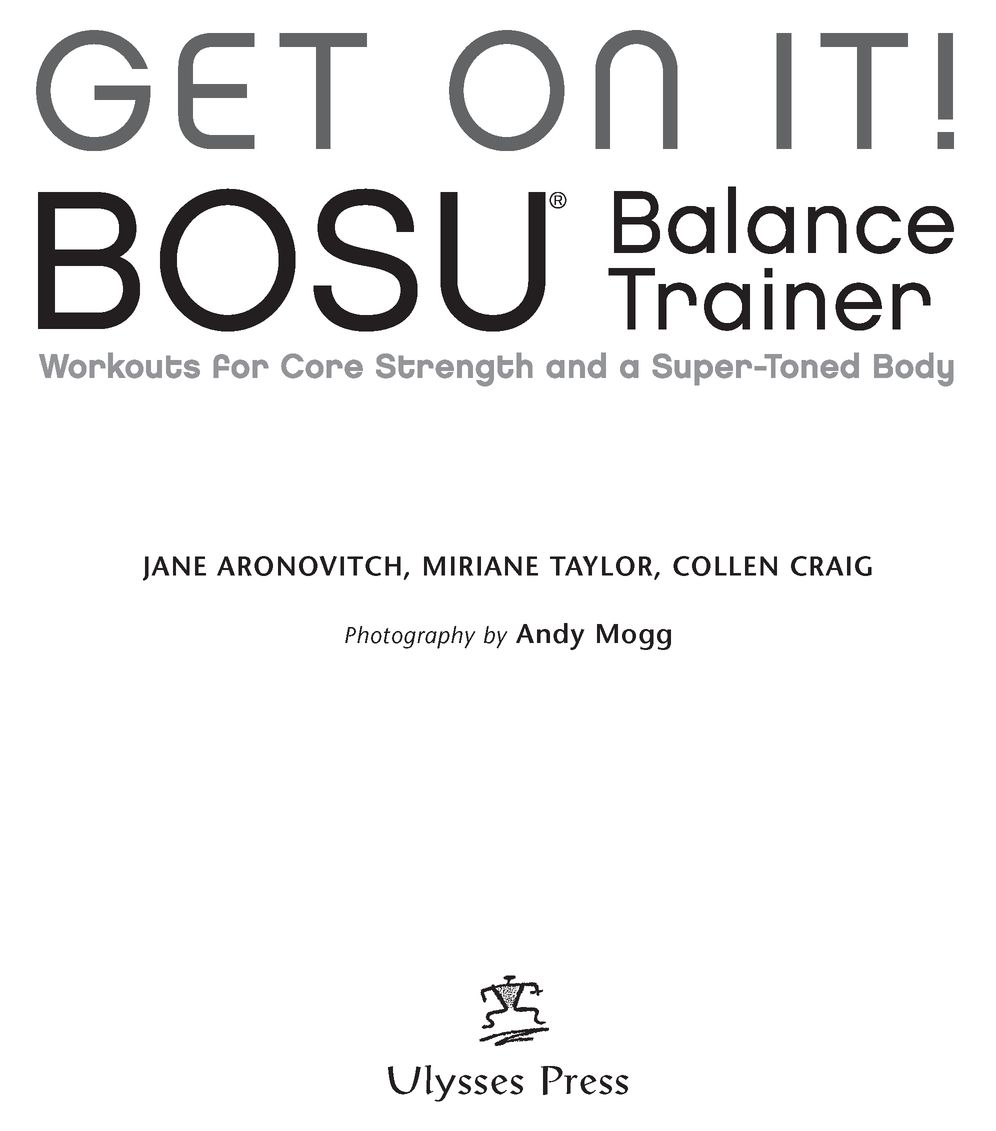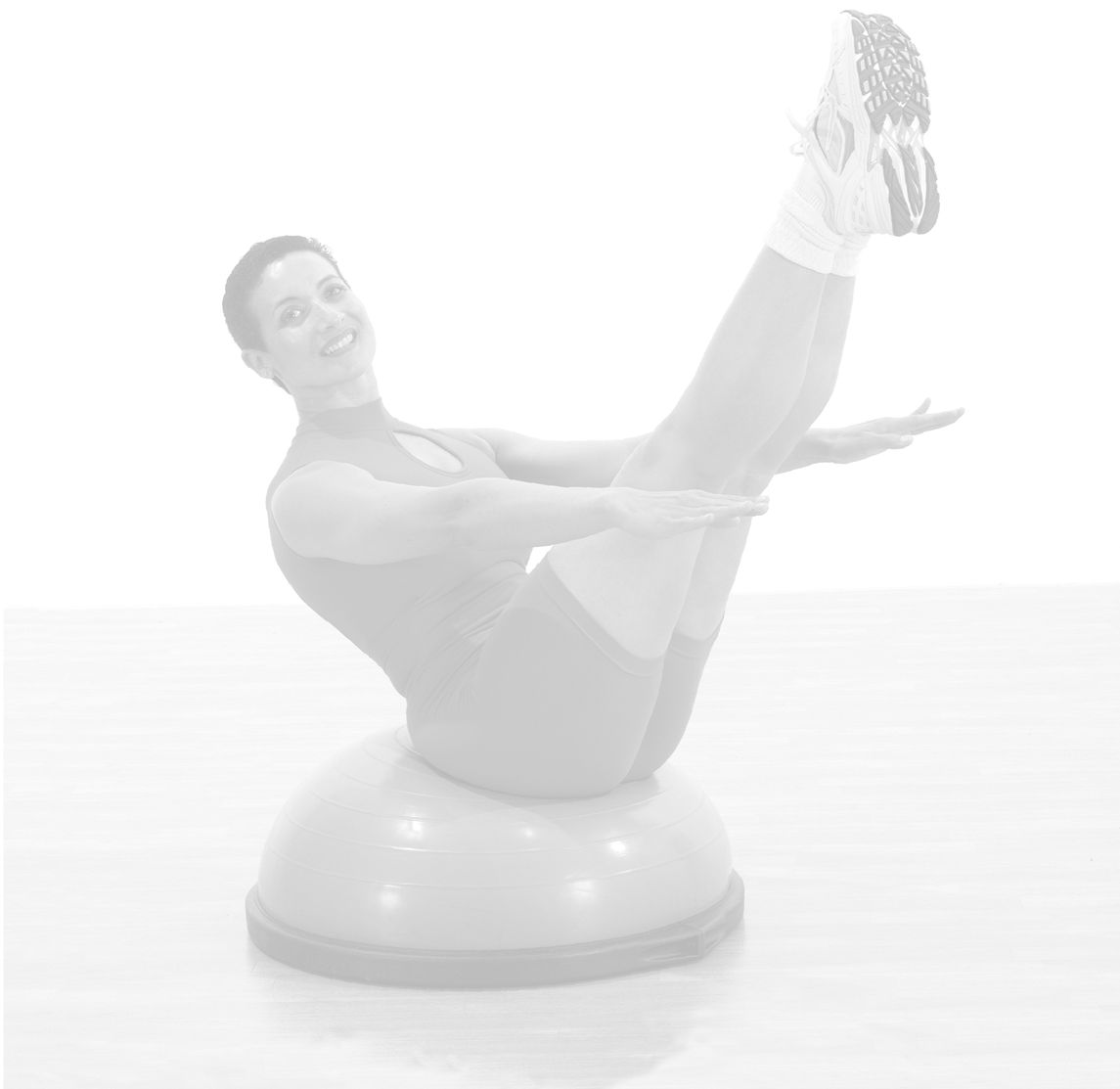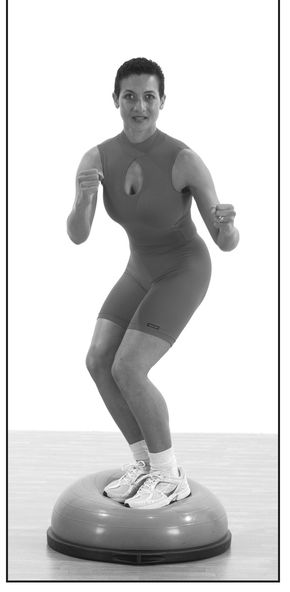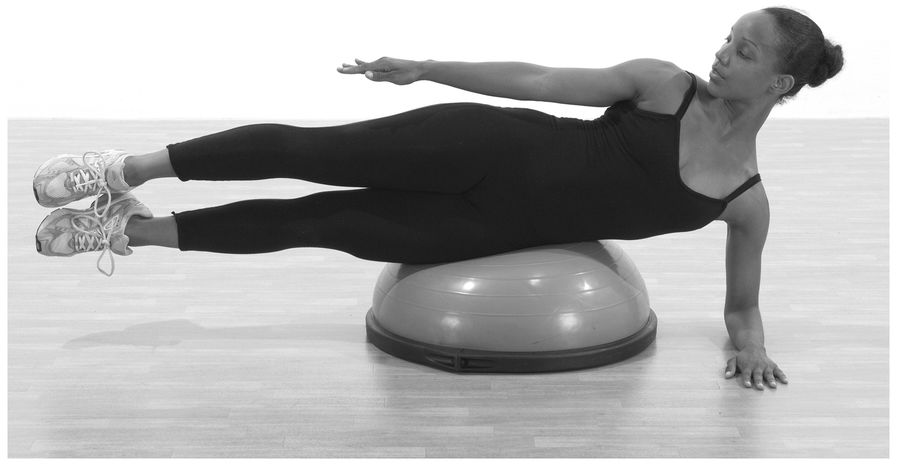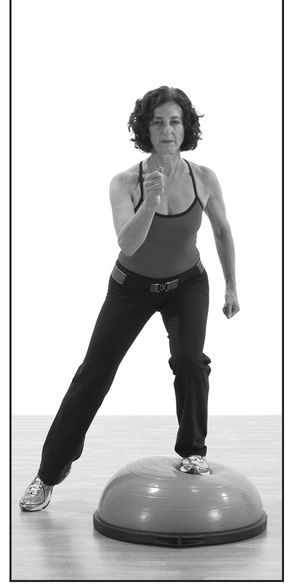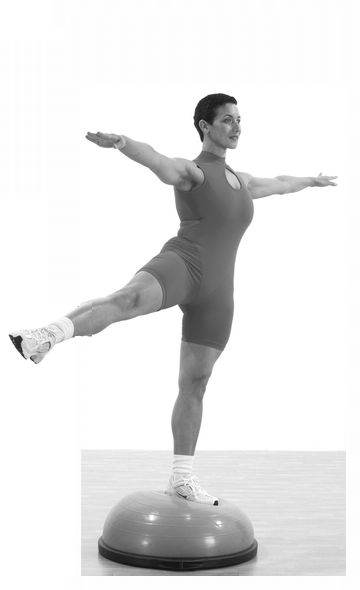Table of Contents
part 1:
getting started
about the book
Welcome to Get on It! BOSU Balance Trainer: Workouts for Core Strength and a Super-Toned Body. With all the buzz about core training and more and more gyms and stores stocking BOSUs, we decided it was time to write a book about the BOSU and how to use it to develop a strong core and toned body.
Get on It! BOSU Balance Trainer is primarily a how-to book for anyone who wants to work with a BOSU, whether you have little or no experience or are an experienced enthusiast who wants to hone your skills.
The main focus of the book is exercises, but first we introduce the BOSU and discuss how it helps develop core strength, balance, and stabilityall the ingredients of a fit and super-toned body. We also talk about the core muscles: what they are, where theyre located, and what they do.
Part 2 of the book presents BOSU basics. It offers a series of warm-up exercises and explains how to stand and start to move on the dome. The examples in this section form the basis for the exercises that appear in Part 3.
Part 3 is devoted to exercises of various types. For simplicity weve grouped them by exercise typesquats and lunges, back exercises, and so on. Please note that the categories are not absolute. For example, you may find an exercise in the Kneeling section that works the abs really strenuously. Thats because, unlike some workout regimens, most of the BOSU exercises work more than one muscle group at a time. In other words, the exercises are grouped more for organizational purposes than anything else.
Each exercise category starts with a brief introduction and a list of general guidelines called Helpful Hints. Within a category, each exercise shows a starting position and gives step-by-step instructions for each move. Weve also incorporated plenty of illustrative photos of the steps. Following each exercise is a list of relevant Tipsideas to keep in mind or cues to help with execution. We also include some Basic variations if you want to simplify a particular move, as well as Challenge and Super-challenge variations if youre seeking to push yourself a little harder.
Part 4 contains a series of suggested workouts. Some focus on specific muscle groups, while others are complete workouts with a warm-up, full set of exercises, and stretches at the end. You can use these workouts exclusively, move through the book sequentially, or pick and choose moves that particularly interest you. In any case, we hope you enjoy the book and develop the same passion for the BOSU that we have!
the buzz about BOSU
Short for both sides utilized, the BOSU Balance Trainer, or BOSU (pronounced Bo like the boys name, and Sue like the girls name), was invented by Californian David Weck in 1999 and launched in 2000. Since then it has become one of the most popular fitness tools in the industry.
The BOSU is approximately 25 inches wide and looks like a big exercise ball thats been cut in half. One side is dome-shaped; the other is flat. The dome side is inflatable and should be filled with air using a pump until it is fairly firm and about eight to ten inches high.
Through its ingenious construction, the BOSU has two unstable surfaces that transform even the simplest moves into a fun and challenging workout. Working on an uneven surface tests your balance and forces you to use and strengthen deep core and stabilizing musclesmuscles that conventional exercise programs often miss.
Suitable for all ages and fitness levels, the BOSU can be used at home or in studio or gym classes. Trainers, athletes, dancers, and general fitness buffs alike use the BOSU to build strength and agility, tone and sculpt muscles, improve aerobic conditioning, burn fat, and improve posture and alignment.
Looking for that long, lean look? The BOSU can help you trim down your waistline. You can also use the BOSU to combine aerobic and cardiovascular exercises with strength training, balance challenges, and flexibilityall the components of a well-rounded exercise regimen.
Making the right connections
Most trainers and sports practitioners agree that a successful core-strengthening program targets groups of muscles in a coordinated way. Some people refer to this approach as functional or integrative trainingtraining the whole body based on the idea that this is how we move in our daily activities.
In his book The Athletes Ball, Rick Jemmett states: Integrative training exercises require the spinal joints plus varying combinations of ankle, knee, hip, shoulder, elbow, and wrist joints, and all the muscles which function at these joints, to work together to perform a given exercise. Jemmett, a physical therapist who specializes in lower back pain, uses the BOSU and stability ball to train athletes as well as help people with injuries. He explains that integrative training exercises require us to support our body weight, stabilize our core, work our arms or legs, and, in some exercises, lift heavy weights, all at the same time (Jemmett 2004, p. 7).
BOSU Balance Trainer
Even something as simple as standing on the BOSU is an example of working the body in an integrated way. As soon as you step on the dome, you feel all the muscles in your body come alive. That feeling is even stronger as you start to move and change positions. For example, when we lift one leg or one arm, our weight shifts and our body has to quickly adjust to this change. When we expand our repertoire to move the upper and lower torso or to work one side of the body and then the other, we need the simultaneous participation of the entire body and quick and flexible motor control. These are all examples of integrated training.
While Jemmett said the following with reference to a stability ball, the same holds true for the BOSU. It provides an unstable support surface, which stimulates the bodys stabilizing mechanisms. This allows you to train the function of the muscles and not just their strength (Jemmett 2004, p. 7).
It seems clear that by its very nature the BOSU is designed to help people strengthen their core and exercise in an integrated way. This is, indeed, the power and beauty of the BOSU and, by association, the exercises that appear in this book. We hope you enjoy them and derive the same pleasure and satisfaction from your BOSU workouts as we do.



